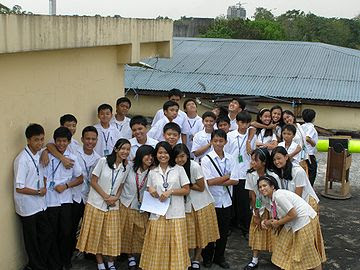Knowledge acquisition involves complex cognitive processes: perception, learning, communication, association and reasoning. The term knowledge is also used to mean the confident understanding of a subject with the ability to use it for a specific purpose if appropriate. See Knowledge Management for additional details on that discipline.
Defining knowledge (philosophy)
| “ | We suppose ourselves to possess unqualified scientific knowledge of a thing, as opposed to knowing it in the accidental way in which the sophist knows, when we think that we know the cause on which the fact depends, as the cause of that fact and of no other, and, further, that the fact could not be other than it is. Now that scientific knowing is something of this sort is evident — witness both those who falsely claim it and those who actually possess it, since the former merely imagine themselves to be, while the latter are also actually, in the condition described. Consequently the proper object of unqualified scientific knowledge is something which cannot be other than it is. | ” |
The definition of knowledge is a matter of on-going debate among philosophers in the field of epistemology. The classical definition, described but not ultimately endorsed by Plato[1], has it that in order for there to be knowledge at least three criteria must be fulfilled; that in order to count as knowledge, a statement must be justified, true, and believed. Some claim that these conditions are not sufficient, as Gettier case examples allegedly demonstrate. There are a number of alternatives proposed, including Robert Nozick's arguments for a requirement that knowledge 'tracks the truth' and Simon Blackburn's additional requirement that we do not want to say that those who meet any of these conditions 'through a defect, flaw, or failure' have knowledge. Richard Kirkham suggests that our definition of knowledge requires that the believer's evidence is such that it logically necessitates the truth of the belief.[citation needed]
In contrast to this approach, Wittgenstein observed, following Moore's paradox, that one can say "He believes it, but it isn't so", but not "He knows it, but it isn't so". [2] He goes on to argue that these do not correspond to distinct mental states, but rather to distinct ways of talking about conviction. What is different here is not the mental state of the speaker, but the activity in which they are engaged. For example, on this account, to know that the kettle is boiling is not to be in a particular state of mind, but to perform a particular task with the statement that the kettle is boiling. Wittgenstein sought to bypass the difficulty of definition by looking to the way "knowledge" is used in natural languages. He saw knowledge as a case of a family resemblance. Following this idea, "knowledge" has been reconstructed as a cluster concept that points out relevant features but that is not adequately captured by any definition.
Communicating knowledge
Symbolic representations can be used to indicate meaning and can be thought of as a dynamic process. Hence the transfer of the symbolic representation can be viewed as one ascription process whereby knowledge can be transferred. Other forms of communication include imitation, narrative exchange along with a range of other methods. There is no complete theory of knowledge transfer or communication.[citation needed]While many would agree that one of the most universal and significant tools for the transfer of knowledge is writing (of many kinds), argument over the usefulness of the written word exists however, with some scholars skeptical of its impact on societies. In his novel Technopoly Neil Postman demonstrates the argument against the use of writing through an excerpt from Plato's work Phaedrus (Postman, Neil (1992) Technopoly, Vintage, New York, pp 73). In this excerpt the scholar Socrates recounts the story of Thamus, the Egyptian king and Theuth the inventor of the written word. In this story, Theuth presents his new invention "writing" to King Thamus, telling Thamus that his new invention "will improve both the wisdom and memory of the Egyptians" (Postman, Neil (1992) Technopoly, Vintage, New York, pp 74). King Thamus is skeptical of this new invention and rejects it as a tool of recollection rather than retained knowledge. He argues that the written word will infect the Egyptian people with fake knowledge as they will be able to attain facts and stories from an external source and will no longer be forced to mentally retain large quantities of knowledge themselves (Postman, Neil (1992) Technopoly, Vintage, New York ,pp 74).
Andrew Robinson also highlights, in his work The Origins of Writing, the possibility for writing to be used to spread false information and there for the ability of the written word to decrease social knowledge (Robinson, Andrew (2003) The Origins of Writing in Crowley and Heyer (eds) Communication in History: Technology, Culture, Society, Boston pp 34). People are often internalizing new information which they perceive to be knowledge but are in reality fill their minds with false knowledge.














